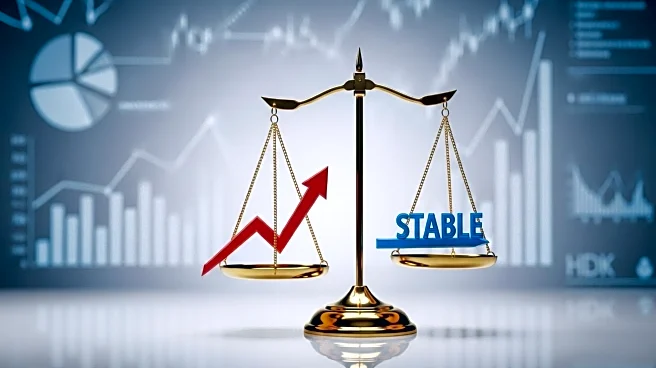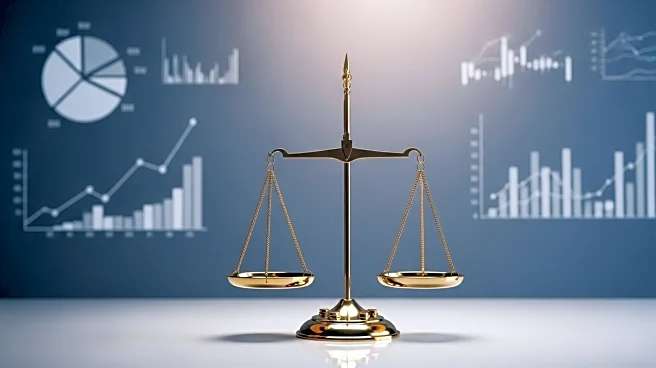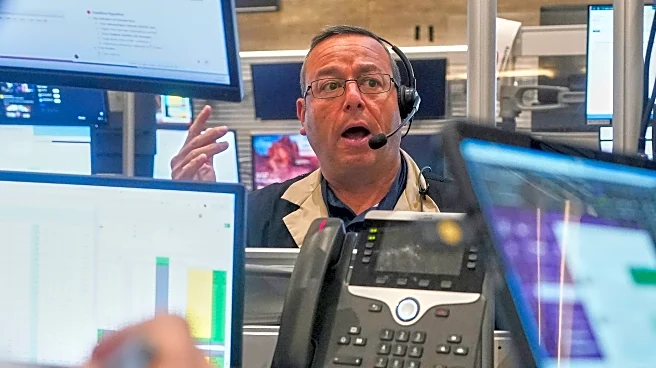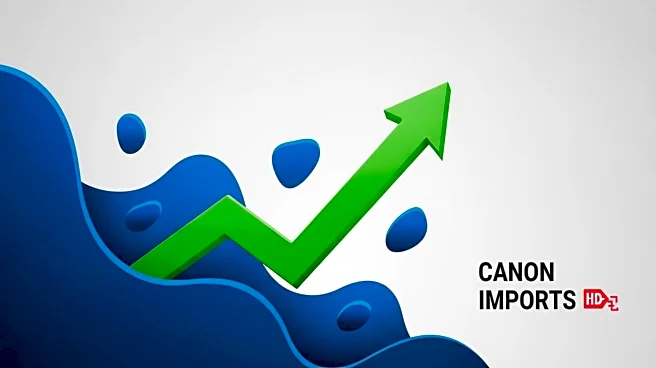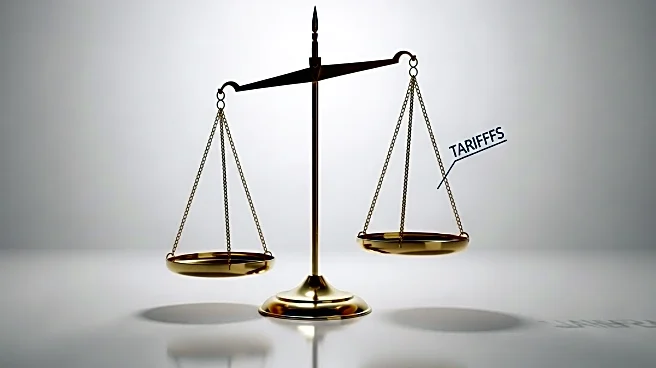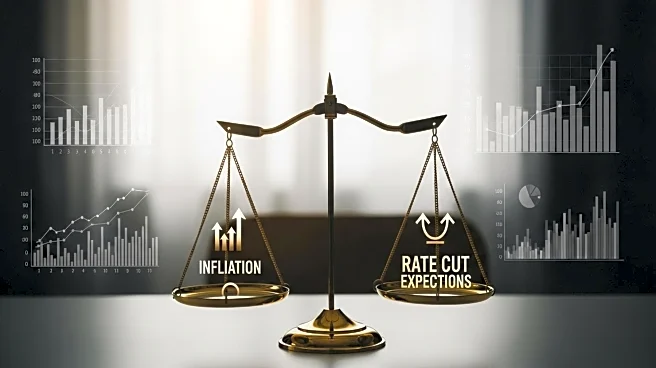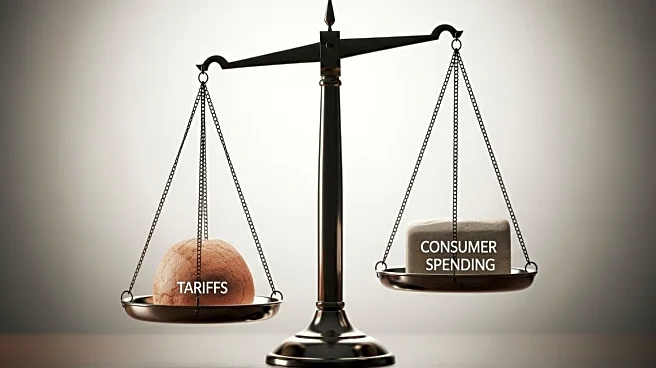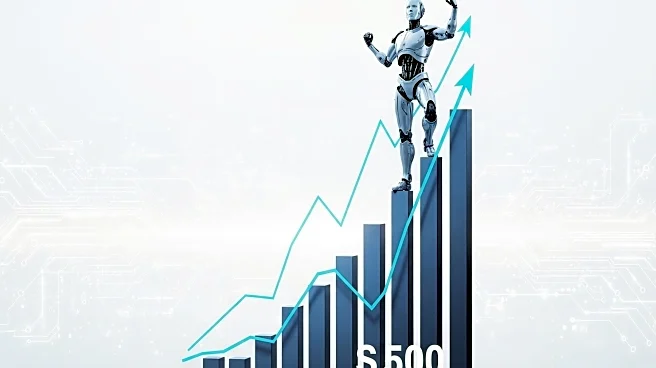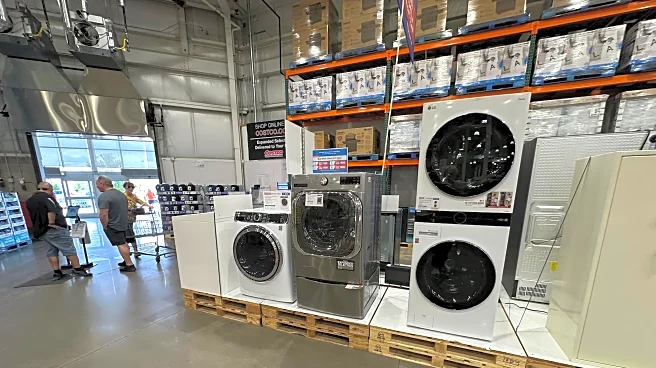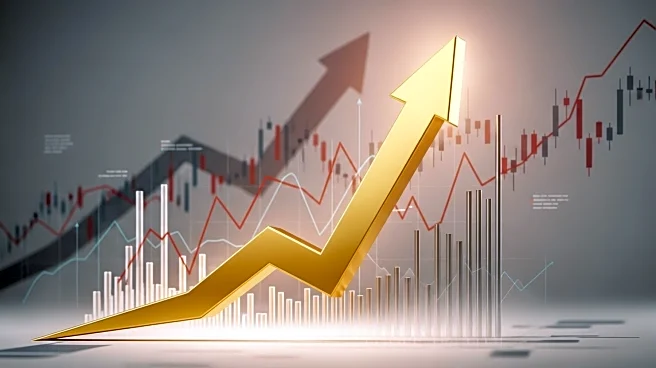What is the story about?
What's Happening?
The Federal Reserve's preferred measure of inflation, the personal consumption expenditures (PCE) price index, showed a rise in core inflation to a 2.9% seasonally adjusted annual rate in July. This increase, reported by the Commerce Department, marks the highest annual rate since February and aligns with the Dow Jones consensus forecast. Core inflation excludes volatile food and energy costs, providing a clearer picture of long-term trends. The monthly increase was 0.3%, consistent with expectations. The all-items index showed an annual rate of 2.6% and a monthly gain of 0.2%. Despite the rise, consumer spending increased by 0.5% and personal income accelerated by 0.4%, indicating economic resilience amid higher prices.
Why It's Important?
The rise in core inflation is significant as it influences the Federal Reserve's monetary policy decisions. The Fed targets a 2% inflation rate, and the current figures suggest the economy is not yet at a comfortable level for policymakers. The report may lead to a resumption of interest rate cuts, with Fed Governor Christopher Waller expressing support for such measures if labor market data continues to weaken. The inflation increase is partly attributed to President Trump's tariffs, which have affected various sectors. The balance of inflation was moderated by a decline in energy prices and a rise in service prices, highlighting the complex dynamics at play.
What's Next?
The Federal Reserve is expected to consider interest rate cuts in its upcoming meeting, with the size of the cut potentially influenced by labor market conditions. The focus will remain on the jobs market, as inflation figures align with expectations. The ongoing impact of tariffs and changes in consumer spending patterns will be closely monitored. Market reactions, including stock futures and Treasury yields, will continue to reflect these economic developments.
AI Generated Content
Do you find this article useful?
